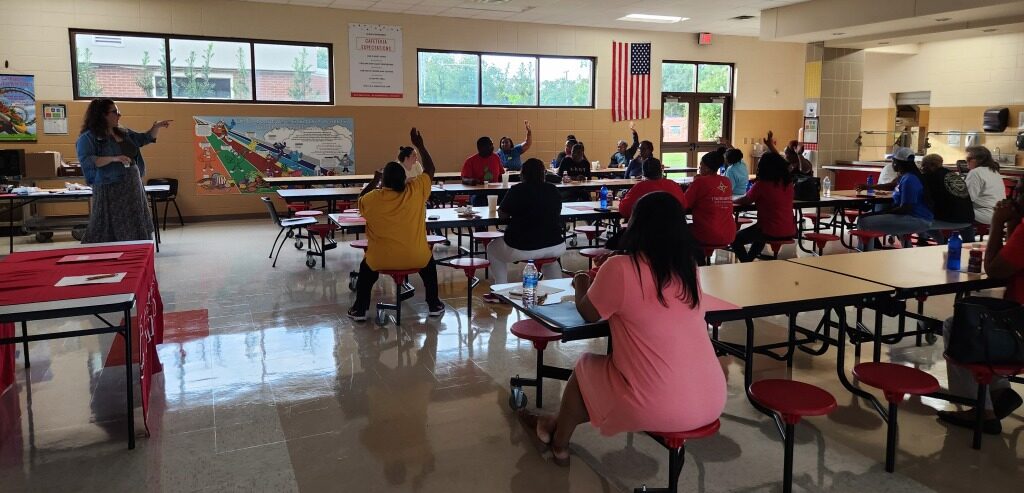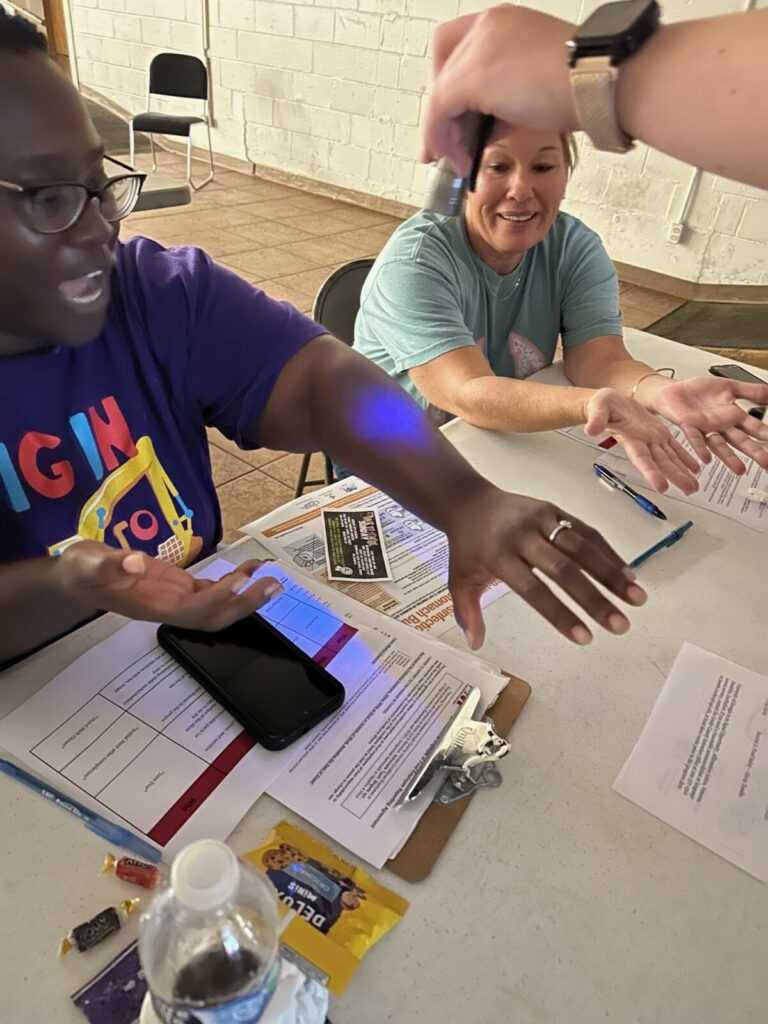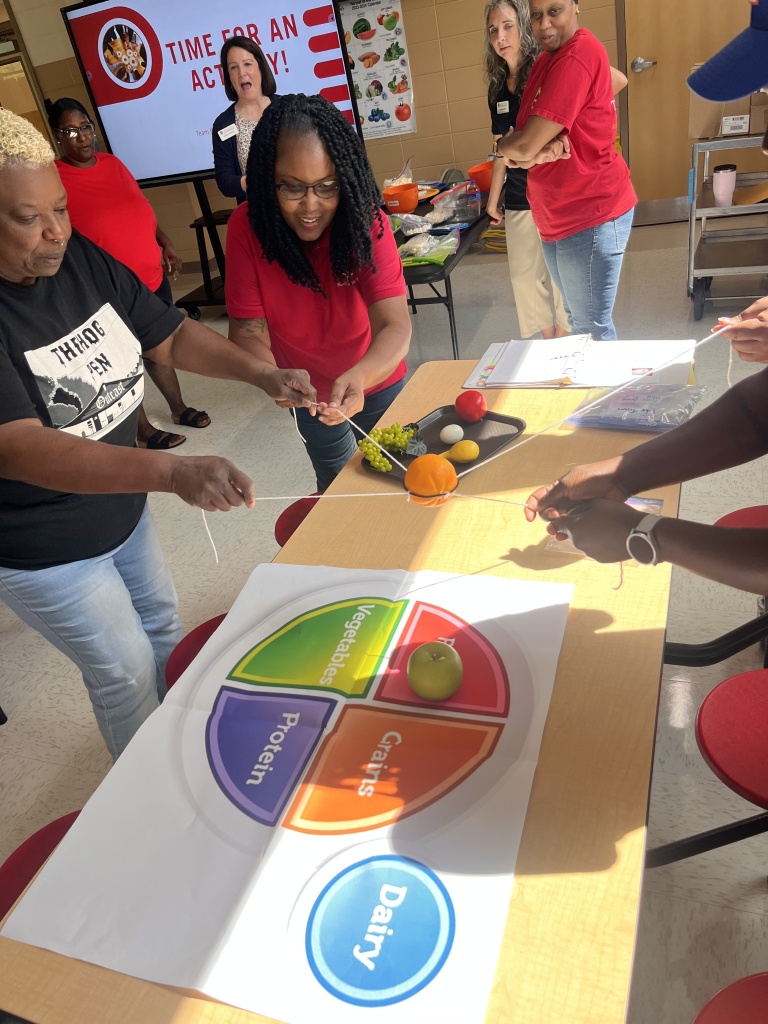
Around 90 Thomasville City and Thomas County School Nutrition staff participated in this 4 hour training from Olivia Tumlin and a few other FACS Agents. School Nutrition staff provide breakfast and lunch to ~8,700 students every year across 12 schools in Thomas County. Across the country, the USDA establishes standards for school nutrition programs that feed millions of children. These standards aim to improve the health and wellness of students and their families – which includes preventing foodborne illness and encouraging healthy eating practices. Around 48 million people in the US get sick from foodborne illnesses every year, and young children are at a higher risk for a serious illness. At the same time, childhood obesity continues to rise in children at an increasing rate. For many students, a school lunch or breakfast may be the most nutritious, balanced meal they receive. Therefore, school nutrition workers play a large role in the health and wellbeing of students and their families.
Back to Basics: Food Safety
The two-hour Food Safety program objectives include recognizing good personal hygiene practices, identifying ways to prevent time and temperature abuse and cross contamination, and recalling the definitions of cleaning and sanitizing. The Food Safety program was Broken up into four sections (personal hygiene, time and temperature, cross-contamination, cleaning and sanitizing), at least one activity was included for each section. Activities included a Foodborne Illness Outbreak activity where participants witnessed the spread of germs by sharing a flour/baking soda mix from their cups. This gave participants an opportunity to greet each other and move around the room. Once vinegar was poured into each cup, the participants had a great time seeing who was ‘infected.’ Participants also volunteered to place food models on shelves in a “Build the Fridge” activity that promoted safe storage and preventing cross-contamination. To break up the lecture time, participants were placed into groups where they read through scenarios and highlighted the safe practices and unsafe practices. They also had the opportunity to perform skits about food safety practices.

Back to Basics: Culinary Skills

The two-hour Culinary Skills program objectives focused on recognizing professionalism and teamwork in foodservice and demonstrating the ability to execute proper measuring and knife techniques. The culinary skills program was broken up into five sections: history of culinary skills, personal representation in the workplace, measuring skills, knife skills, and teamwork. Participants played “Equivalents Bingo” to test their knowledge of measurement equivalents. They also participated in activities like “How do you Measure Me” and “How much flour will a measuring cup hold” to test their knowledge about dry vs liquid measuring. Participants also volunteered to learn how to use and tare a digital scale correctly in front of the class. To get the participants moving during lecture, they played “Customer Satisfaction and Dissatisfaction,” where participants matched a dissatisfied customer’s complaint with a solution or satisfied customer experience. Finally, participants were broken up into groups where they completed a series of puzzles. This activity encouraged communication between participants.
Overall, over 95% of participants plan to use the information presented in the program. School nutrition workers play a huge role in keeping our youth happy and healthy!
